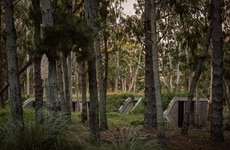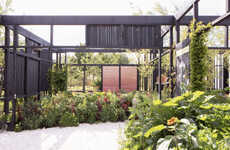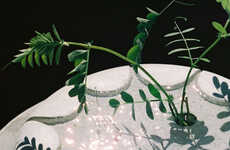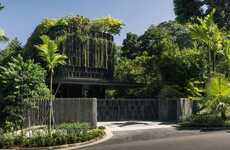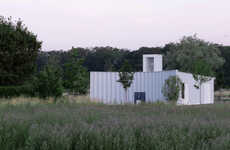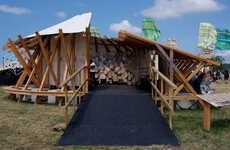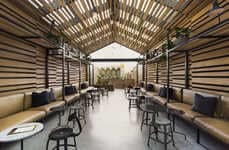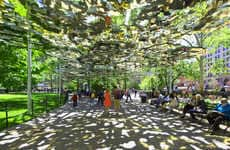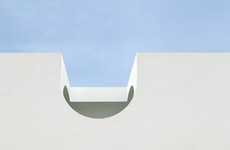
The Fountain House Covers a Montreal Fountain in Grass and Fungi
Alyson Wyers — November 20, 2014 — Art & Design
References: raumlabor.net & dezeen
The Fountain House was designed by Raumlaborberlin as a grassy enclosure for a fountain in Montreal. The circular pavilion has green walls that completely covers the small fountain located in the center of the historic Canadian city. The German studio constructed the dodecagonal wooden building on an area of wasteland as part of a Montreal arts festival.
Based in Berlin, Raumlabor created the public space to emphasize free infrastructures such as access to water which man take for granted. Architect Markus Bader explains the Fountain House celebrates the free access to public good and shared spaces. The structure has a wood frame covered in soil that contains grass and fungi seeds that will sprout and grow throughout the festival's duration.
Based in Berlin, Raumlabor created the public space to emphasize free infrastructures such as access to water which man take for granted. Architect Markus Bader explains the Fountain House celebrates the free access to public good and shared spaces. The structure has a wood frame covered in soil that contains grass and fungi seeds that will sprout and grow throughout the festival's duration.
Trend Themes
1. Green Architecture - The trend for utilizing sustainable materials in architecture is growing. The Fountain House demonstrates how greenery can be integrated into traditional designs.
2. Public Space Activation - Cities and towns are always searching for innovative ways to enliven public spaces. The Fountain House, a temporary, interactive installation shows how unused urban spaces can become new communal zones for public events.
3. Interactive Installations - As visitors and individuals look to engage with the world around them, interactive installations are becoming increasingly popular. The Fountain House is an example of a unique, engaging experience that allows people to directly interact with public art.
Industry Implications
1. Architecture - The architecture industry can identify more innovative ways to integrate sustainable materials and green spaces into traditional designs
2. Public Art - Community groups, festivals, and artists can collaborate in creating unique installations and experiences to enliven unused urban spaces
3. Landscaping/gardening - Landscape designers and garden centers can offer more unique, interactive installations for companies, local events, and public space activation
2.1
Score
Popularity
Activity
Freshness


